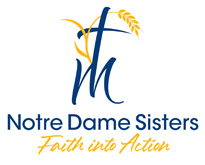The reality for new immigrants – reflections from Tom and Margaret Hoarty
Anyone who watches TV news, reads the newspaper or follows social media is aware of what is often called “the crisis in immigration.”
Recently we returned from El Paso, Texas, where we volunteered at a shelter for migrants seeking asylum in the U.S. Here is what we saw: families, mothers, fathers and children ranging in age from infants to teenagers. They had few belongings, except the clothes they wore and the children they carried. They had no cars, no food, no money, no homes. They mainly came from Guatemala, Honduras and El Salvador, traveling over 1000 miles through Mexico, seeking to escape the gang-related violence, drug wars, and poverty in their home countries.
Here is what we did not see: We saw no murderers, rapists, criminals or gang members. None of the migrants were seeking welfare, government financing, or other public support. All were eagerly hoping to find work of any type to support their families.
They were asylum-seekers. For decades the U. S. has welcomed people seeking asylum from these types of conditions and has extended to them the legal right to do so. At the border they were issued documents permitting them to travel in the U.S. to the cities where their sponsors lived and where their immigration hearings would be held. The asylum seekers spent several nights in the shelter, while their sponsoring family members or friends arranged transportation for them to their new homes.
We asked ourselves: What kind of desperation must you feel to leave behind all that you’ve ever known—your culture, your home, your belongings—to seek safety and an uncertain future in a country with a different language? What kind of desperation must you feel to flee with your children, traveling thousands of miles—miles fraught with untold dangers?
The asylum seekers we met were parents looking for a safe place to live and work. When we watched them care for their children we saw the same love and respect we see in the faces of our own adult children as they care for little ones lucky enough to be born here in the U.S.
Currently the birthrate in the United States is below replacement level. At a time when employers are seeking workers for vacancies, it makes sense to welcome those who are looking for a better life and are eager to work. Immigrants have always enriched our nation with their cultural diversity while at the same time assimilating and becoming citizens and active community members.
What can we do here in Nebraska, 1000 miles from the southern border? We can listen to the news with an open heart—to see beyond the rhetoric and shouting, to look at the human faces of those who are being spoken of in inhuman terms. Can we see our brothers and sisters there?
We can have a conversation with others about the fate of our sisters and brothers at the border—— in the hope that people of good faith will feel a kinship with these refugees.
We can ask our leaders, civil and religious, to speak up on behalf of those who have no voice, and who need from us not a handout, but a helping hand up.
We can welcome these migrants to our state, where entry-level jobs are plentiful and housing is affordable.
What we saw in El Paso was this: Men, women and children, overcoming immense obstacles, hopeful of finding a safe place to live and work in a new country. When we refer to them as sisters and brothers, aren’t we called to treat them as sisters and brothers? Their suffering is our suffering. Their hope is our hope. Nosotros somos todos una familia. We are all one family.
In short, we can treat them as members of the human family.
Tom and Margaret Hoarty
Members of St. Pius X Catholic Church in Omaha
